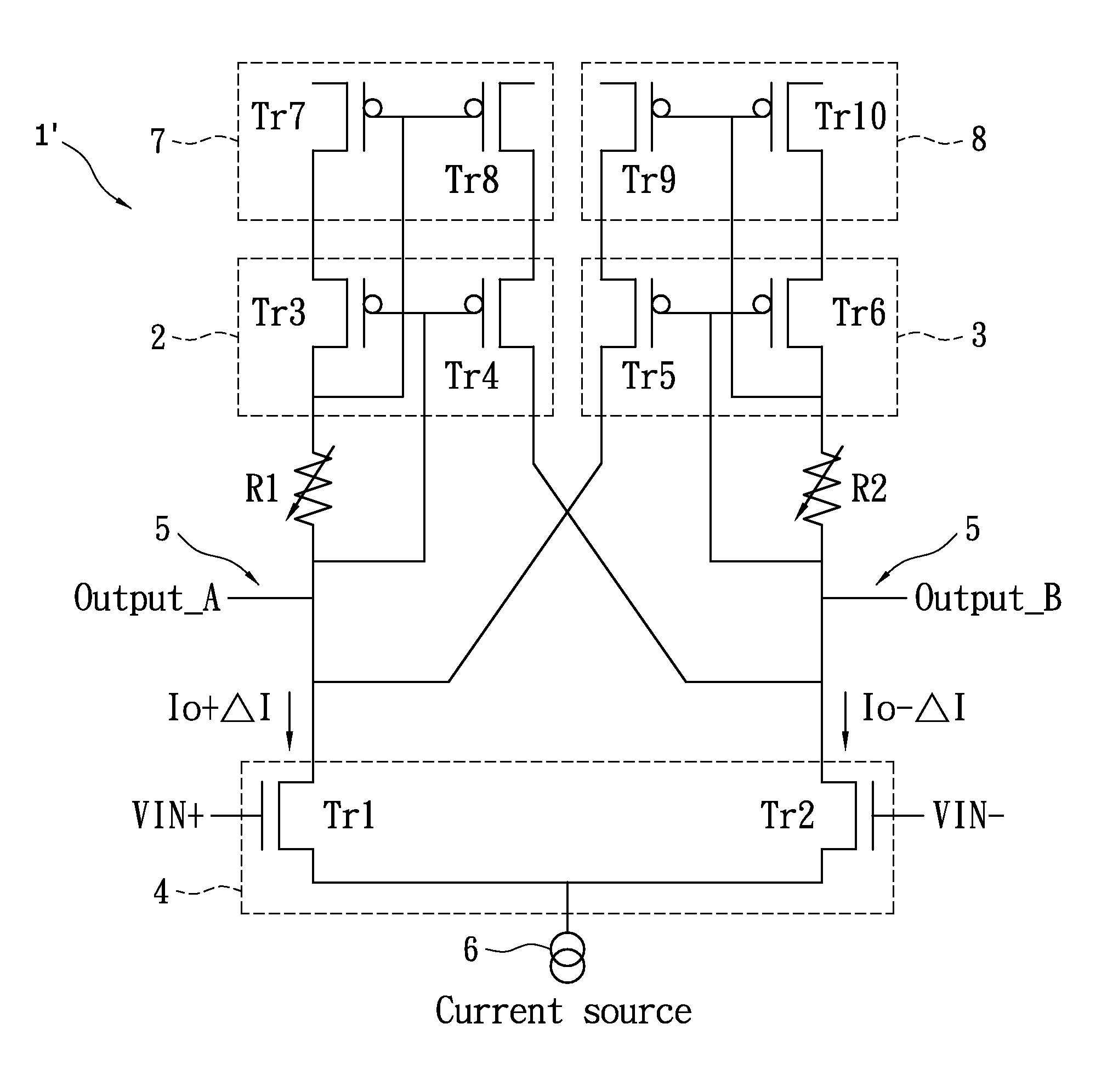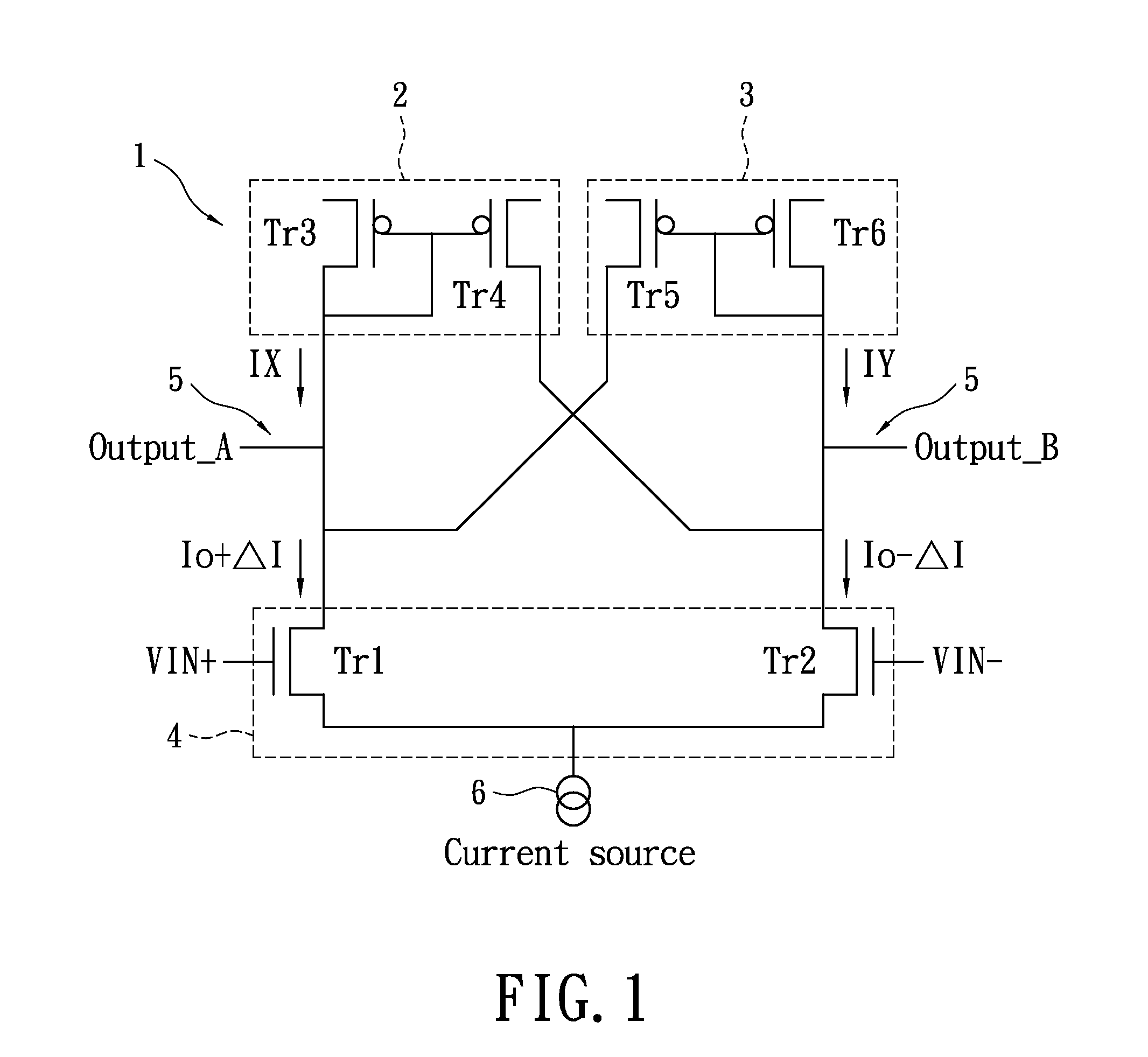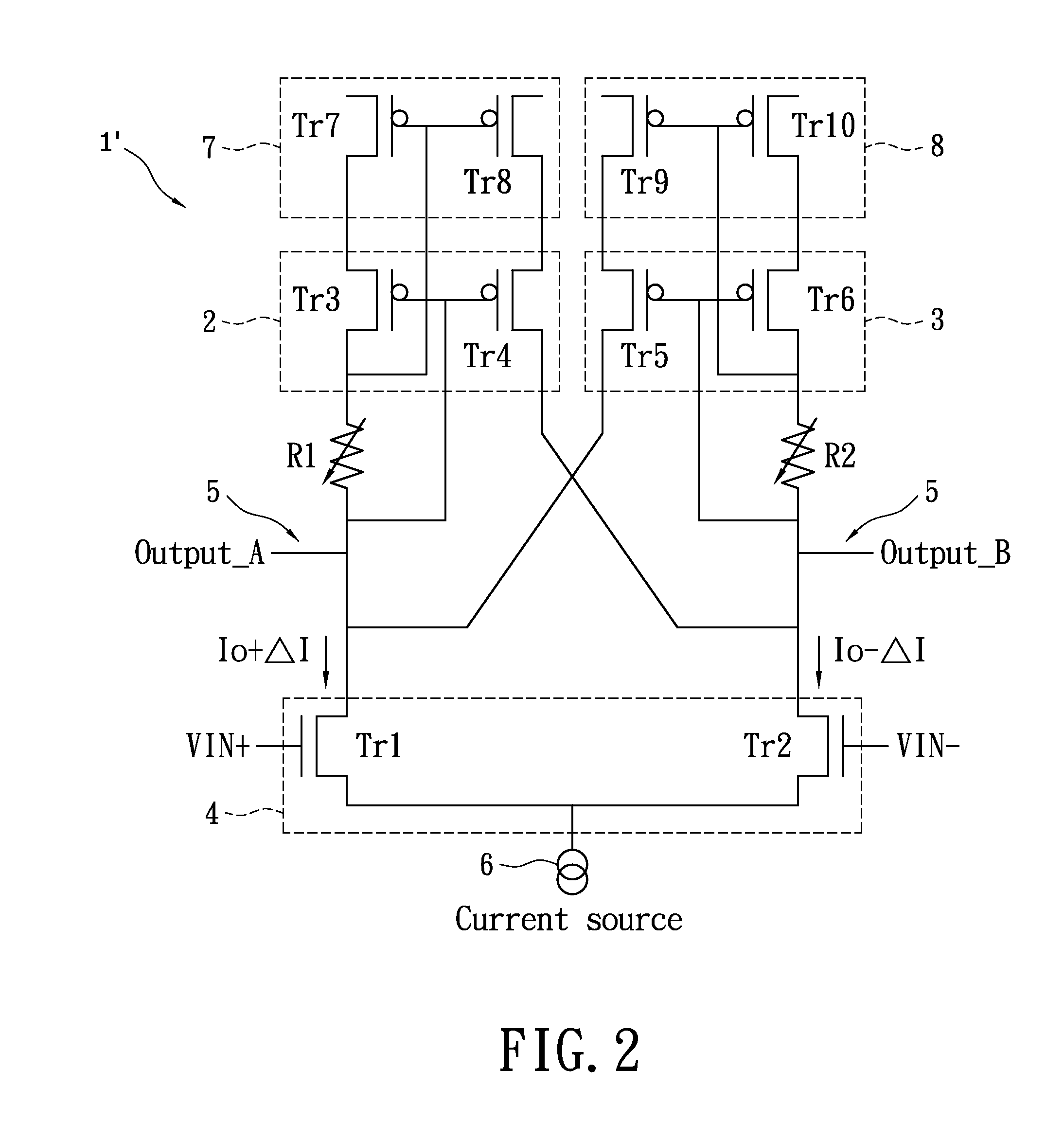Operational amplifier circuit structure
a circuit structure and amplifier technology, applied in the field of operational amplifiers, can solve the problems of undermining the performance of the traditional operational amplifier device, discrepancy between input voltage and output voltage, and almost impossible to achieve the above-mentioned characteristics of the real-world operational amplifier, and achieve the effect of minimizing offset voltage and larger gain
- Summary
- Abstract
- Description
- Claims
- Application Information
AI Technical Summary
Benefits of technology
Problems solved by technology
Method used
Image
Examples
first embodiment
[0023]Please refer to FIG. 1 illustrating an operation amplifier circuit structure 1 according to the instant disclosure. The operation amplifier circuit structure 1 may include a first current mirror 2, a second current mirror 3, an input portion 4, an output portion 5, and a current source 6. The input portion 4 may be implemented in terms of a pair of transistors Tr1 and Tr2, while the first current mirror 2 may be formed by another pair of transistors Tr3 and Tr4 having a mirror ratio of α. Meanwhile, the second current mirror 2 may be formed by another pair of transistors Tr5 and Tr6 having a mirror ratio of β.
[0024]Sources of the transistors Tr3 and Tr5 may be coupled to a drain of the transistor Tr1, gates of the transistors Tr3 and Tr4 may be coupled to each other, and gates of the transistors Tr5 and Tr6 may be coupled to each other as well. At the same time, sources of the transistors Tr4 and Tr6 may be coupled to a drain of the transistor Tr2, and source of the transistor...
second embodiment
[0033]Please refer to FIG. 2 of a simplified circuit diagram of another operational amplifier circuit structure 1′ according to the instant disclosure. Compared with the operational amplifier circuit structure 1, the operational amplifier circuit structure 1′ may further include a third current mirror 7 and a fourth current mirror 8. The third current mirror 7 may be associated with a third current mirror ratio of K, while the fourth current mirror 8 may be associated with a fourth current mirror ratio of K. As previously mentioned, in one implementation the third current mirror ratio and the fourth current mirror ratio may be the same as the current mirror ratios of the first current mirror and the second current mirror. Meanwhile, the third current mirror 7 may be coupled to the first current mirror 2 at a predetermined location that is on the same side along with the input portion 4. The fourth current mirror 8 may be coupled to the second current mirror 3 at another predetermine...
third embodiment
[0041]Please refer to FIG. 4 illustrating a simplified circuit diagram of an operational amplifier circuit structure 1″ according to the instant disclosure. As shown in FIG. 4, an input portion 4 may be implemented in terms of a rail-to-rail amplifier circuit having a PMOS and a NMOS, with transistors Tr11 to Tr30 and variable resistance R3 to R6.
[0042]The variable resistance R3 to R6 may be coupled to gates of cascade current mirrors having the transistors Tr13 / Tr14, Tr15 / Tr16, Tr17 / Tr18, and Tr19 / Tr20, respectively, for ensuring the offset voltages of the current mirrors may be compensated and broader dynamic ranges.
PUM
 Login to View More
Login to View More Abstract
Description
Claims
Application Information
 Login to View More
Login to View More - R&D
- Intellectual Property
- Life Sciences
- Materials
- Tech Scout
- Unparalleled Data Quality
- Higher Quality Content
- 60% Fewer Hallucinations
Browse by: Latest US Patents, China's latest patents, Technical Efficacy Thesaurus, Application Domain, Technology Topic, Popular Technical Reports.
© 2025 PatSnap. All rights reserved.Legal|Privacy policy|Modern Slavery Act Transparency Statement|Sitemap|About US| Contact US: help@patsnap.com



